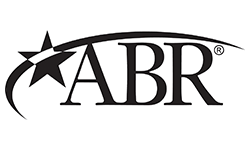
The standard deduction can lower your taxable income by a set amount, resulting in a lower tax bill. The deduction is designed for simplicity — so you can typically claim it automatically each year.
The deduction varies based on your filing status, age and whether you’re blind.
What does standard deduction mean?
The standard deduction is a fixed dollar amount you may subtract from your taxable income — meaning more of your money isn’t subject to taxes — resulting in either a lower tax bill or a higher refund.
But why does this exist?
“The IRS offers it to simplify the tax-filing process,” said Taylor Kovar, a certified financial planner (CFP) and CEO at Kovar Wealth Management.
U.S. taxpayers can often deduct medical expenses, charitable donations, educational tax credits, property taxes and more. Rather than requiring the tax filer and the IRS to comb through all types of deductions for most people, Uncle Sam offers a standard deduction.
The standard deduction amount is primarily based on your tax filing status, but other factors can also affect it.
American taxpayers who are blind or over the age of 64 get to take an additional amount, while those who are claimed as dependents on someone else’s taxes must claim a lower amount.
How do standard deductions work?
The standard deduction is designed for simplicity.
“You will add up all your sources of income, wages, dividends and interest, then subtract the standard deduction amount to determine your taxable income for the year,” said Lawrence Sprung, a CFP and founder of Mitlin Financial.
Take a look at an example: A single person had an income of $100,000 in 2023. She’s entitled to a standard deduction of $13,850, so the tax break reduces her taxable income to $86,150.
Standard vs. itemized deductions: What’s the difference?
The standard deduction is a flat, guaranteed amount you can subtract from your gross income.
Itemized deductions work a bit differently because they “require you to list eligible expenses that you can deduct from your income,” Kovar said.
Again, itemized deductions can include property taxes, mortgage interest and retirement plan contributions. Each expense may be subject to limitations, however. You can’t deduct contributions to an individual retirement account if you’re single, covered by an employer-sponsored retirement plan and make $83,000 or more.
You can choose whether to claim the standard deduction or itemize your deductions on Schedule A.
“Those taxpayers who have straightforward financial situations do not need to go through the process of itemizing their deductions,” said Sprung. “[They] can simply use the standard deduction, making the filing of their returns much easier.”
If you don’t know which is better for your tax situation, you could go through the process of itemization and see how the total deduction from that compares to the standard deduction you qualify for. While this is more work, it could mean significant savings.
The IRS recommends itemizing if:
- The total amount of your allowable itemized deductions exceeds your standard deduction amount.
- You aren’t eligible to use the standard deduction.
- Someone else claims you as a dependent, and therefore, your standard deduction is limited.
Standard deductions for single, married and head of household
For the 2023 tax year (for forms you file in 2024), the standard deduction is $13,850 for single filers and married couples filing separately, $27,700 for married couples filing jointly and $20,800 for heads of household.
The standard deduction amounts increase for the 2024 tax year — which you will file in 2025. They are $14,600 for single filers and married couples filing separately, $21,900 for heads of household and $29,200 for joint couples.
| 2023 Standard Deduction Amounts | |
|---|---|
| Filing status | Standard deduction |
| Single | $13,850 |
| Married filing separately (if eligible) | $13,850 |
| Head of household | $20,800 |
| Married filing jointly | $27,700 |
| 2024 Standard Deduction Amounts | |
|---|---|
| Filing status | Standard deduction |
| Single | $14,600 |
| Married filing separately (if eligible) | $14,600 |
| Head of household | $21,900 |
| Married filing jointly | $29,200 |
Standard deductions for taxpayers over 65
Taxpayers get a higher standard deduction when they turn 65 or are blind. If you are both, you get double the additional deduction.
Eligible filers add the amount to their existing base standard deduction. The extra amount depends on the person’s filing status and applicable conditions.
| 2023 ADDITIONAL STANDARD DEDUCTION AMOUNTS | |
|---|---|
| Single or head of household | |
| 65 or older or blind | $1,850 |
| 65 or older and blind | $3,700 |
| Married filing jointly and married filing separately | |
| 65 or older or blind | $1,500 per eligible taxpayer |
| 65 or older and blind | $3,000 per eligible taxpayer |
| 2024 ADDITIONAL STANDARD DEDUCTION AMOUNTS | |
|---|---|
| Single or head of household | |
| 65 or older or blind | $1,950 |
| 65 or older and blind | $3,900 |
| Married filing jointly and married filing separately | |
| 65 or older or blind | $1,550 per eligible taxpayer |
| 65 or older and blind | $3,100 per eligible taxpayer |
Standard deductions for dependents
Your standard deduction is limited if someone else can claim you as a dependent. For the 2023 tax year, dependents can claim either $1,250 or their earned income plus $400, whichever is greater.
For 2024, the limit is the greater of $1,300 or your earned income plus $450.
Pro tips for a successful tax season
Many financial experts recommend preparing your tax return early and staying organized.
“Keep track of important documents, like W-2s, and receipts for potential deductions,” said Michael Collins, a chartered financial analyst and CEO of WinCap Financial.
Collins also recommended double-checking all information before submitting your tax return to avoid any mistakes or delays in processing.
If you feel overwhelmed by a complicated tax situation, contact a certified public accountant or tax consultant. “A tax expert can provide valuable guidance and ensure you are taking advantage of all deductions and credits available to you,” Collins said.
Frequently asked questions (FAQs)
What is the 2023 standard deduction?
The standard deduction amounts for 2023 are:
- Single: $13,850
- Married filing jointly: $27,700
- Head of household: $20,800
- Married filing separately (if eligible): $13,850
Kim Porter-Ashley Barnett and Jenn Jones- Blueprint




